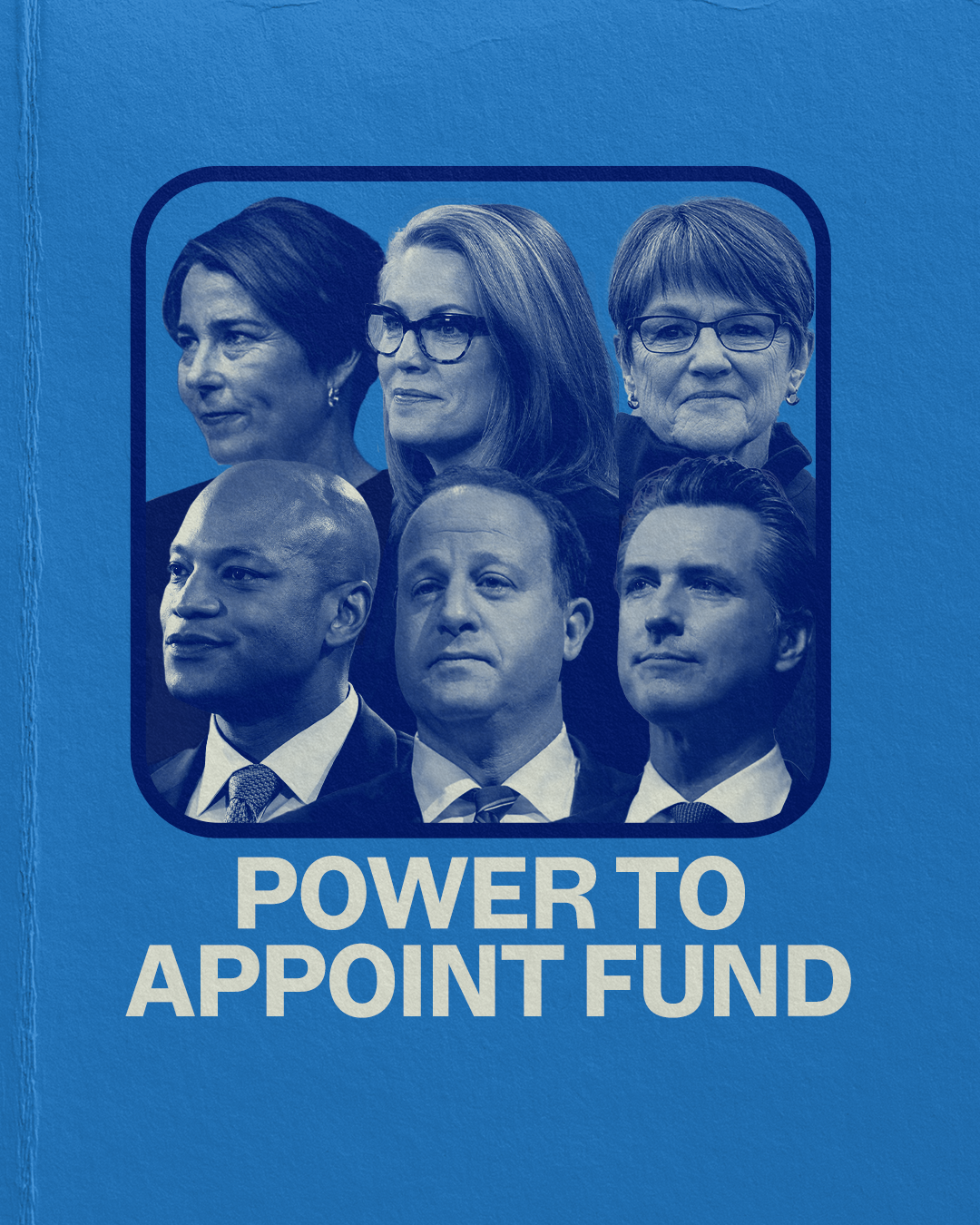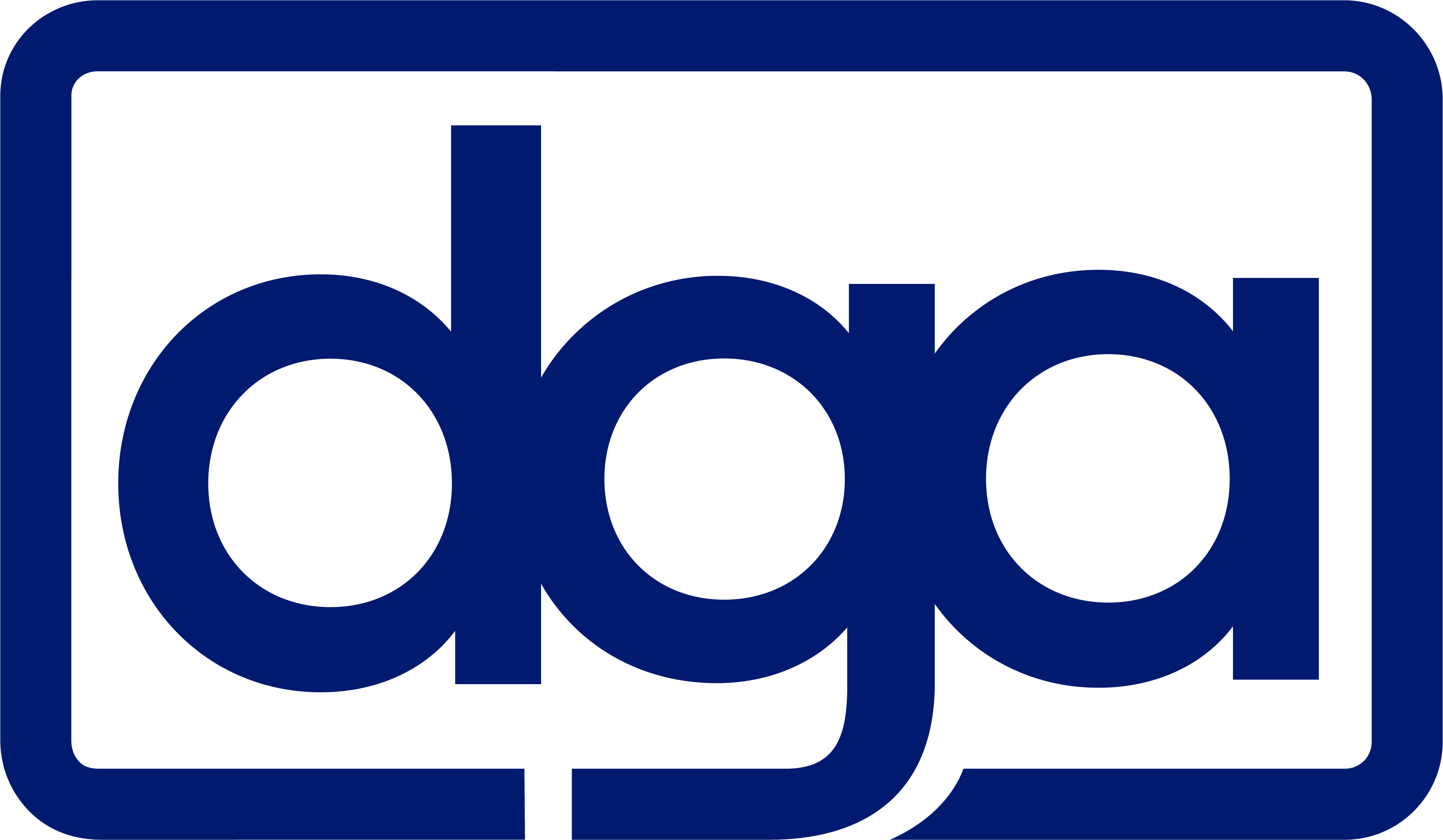
Can you donate now to join our fight?
We just launched the Power to Appoint Fund to highlight the important role Dem Govs play to ensure integrity in our country’s judicial process and protect fundamental freedoms. Your support will ensure we can make crucial investments in key states and protect our democracy. Please don’t wait: rush your gift to elect Democratic governors! >>>
Election Day Memo: The DGA’s Four-Year Plan to Maximize the 2018 Map
Today marks the biggest day for governors races in a decade. With 36 seats up, Democrats have a historic opportunity to elect new governors who can innovate on progressive policies, build the future of the Democratic Party, and stop Republican gerrymandering after the 2020 Census.
This is not just one Election Day; it’s a decadal election that will impact state policies and redistricting maps for a generation. It also marks the culmination of four years of work by Democratic governors to build to November 2018.
Starting four years ago, the DGA set November 2018 as its North Star, with a historic opportunity to maximize Democratic gains. We set forth a long-term strategy starting in 2015 to build to this day with state-level infrastructure, candidate support programs, and record-setting fundraising.
We know from the last 20 years of gubernatorial elections that parties can flip up to 6 seats in the right political climate: In 2006, Democrats won a net +6 seats, and Republicans did the same in 2010. Our four-year-plan built for such an opportunity in 2018.
Our strategic imperative was to maintain as wide a field of competitive campaigns as possible, leading to competitive races across the country today. Today, we have such a field: With more than a dozen competitive races — the majority of which have Democrats on offense.
There were four components to that strategy:
- Expanding the map by working with candidates everywhere
- Historic fundraising
- Running top quality candidates and campaigns
- Strategic deployment of resources
Expanding the Map
With an eye towards keeping as many of the 36 gubernatorial races as competitive on Election Day as possible, the DGA took an expansive view of the 2018 gubernatorial map. We engaged early with Democratic candidates and campaigns across the country in order to build trust and open lines of communication. We have been able to run strong in blue states, but we have also made many red and purple states competitive. Of the 12 governors races currently ranked as “toss up” by Cook Political Report, 8 were won by Trump in 2016, and 10 elected a Republican governor in 2014.
Democratic candidates and campaigns across the country have seen their races move in a favorable direction. Since the first Cook ratings in 2017, 14 Democratic candidates saw their races move more Democratic. Only 6 Republican candidates or incumbents saw the same.
|
Cook Ratings Movement |
|||
| State | Early 2017 Rating | Nov. 2018 Rating | Net Ranking Movement |
| Georgia | Solid Republican | Toss Up | 3 toward D |
| Illinois | Lean Republican | Likely Democratic | 3 toward D |
| Iowa | Solid Republican | Toss Up | 3 toward D |
| Kansas | Solid Republican | Toss Up | 3 toward D |
| Michigan | Toss Up | Lean Democratic | 1 toward D |
| Minnesota | Lean Democratic | Likely Democratic | 1 toward D |
| New Mexico | Toss Up | Lean Democratic | 1 toward D |
| Ohio | Lean Republican | Toss Up | 1 toward D |
| Oklahoma | Solid Republican | Toss Up | 3 toward D |
| Pennsylvania | Lean Democratic | Likely Democratic | 1 toward D |
| South Carolina | Solid Republican | Likely Republican | 1 toward D |
| South Dakota | Solid Republican | Toss Up | 3 toward D |
| Tennessee | Solid Republican | Likely Republican | 1 toward D |
| Wisconsin | Lean Republican | Toss Up | 1 toward D |
Historic Fundraising
DGA entered the cycle having historically been outspent dramatically by the RGA. State-level races have often received less attention in Democratic politics. The repercussions of Democratic underinvestment have been felt for the better part of the last decade due to Republican gerrymandering. So, the DGA set about an effort to highlight the national significance of governors races to increase awareness among Democratic supporters.
In order to emphasize the importance of governors’ role in ending gerrymandering, the DGA unveiled its “Unrig the Map” initiative in 2015. Beginning with nine targeted states, the DGA created a zero-overhead fund to win targeted gubernatorial races that are key to 2021 redistricting. In 27 of the 38 races in 2018, the governor has veto power and plays a significant role in the redistricting process. We initially targeted 9 states–including Virginia in 2017, Colorado, Florida, Maine, Michigan, Nevada, Ohio, Pennsylvania, and Wisconsin–and recently added Georgia to that roster. The DGA and our allies invested more than $75 million in these 10 Unrig the Map targeted races.
Through fairer maps in our targeted states, Democrats could net more than 20 Congressional seats, dramatically improving chances of winning back a lasting Democratic majority in the House.
This program helped drive new interest towards governors’ races and helped the DGA raise a record-setting $122M in the 2017-18 cycle, besting the previous high of $88 million in 2013-2014.
Running Top Quality Candidates and Campaigns
This cycle, our candidates better reflect the diversity of the states they are running to represent, setting a number of new records including 12 women, 4 LGBTQ candidates, 3 African-American candidates, 4 Hispanic candidates, and 5 veterans. The strength of their candidacies is further evidence that the best way to run for office is to run as yourself.
Campaigns are only as good as the candidates they support, and Democrats have a particularly strong slate of gubernatorial candidates this year. The large number of open seats led to competitive primaries on both sides of the aisle. While Democrats debated over policy plans, Republican primaries became a Trump loyalty contest. Republicans nominees in several key states – especially Michigan, Ohio, Florida, Connecticut and Rhode Island – still carry baggage from a primary spent embracing Trump on health care policy and on style.
In an era of authenticity, the DGA’s basic approach is to allow candidates to be themselves. While Republicans were trying to become Donald Trump, Democratic candidates tailored their races to their strengths and unique personalities. What works in South Dakota will not work in Florida. What does work across the board is candidates being true to who they are, and how they communicate their story to voters. By not picking sides in primaries, the DGA was able to work with all campaigns in preparation for the general election.
This is why Gretchen Whitmer can put herself in a strong position to win by focusing on “fixing the damn roads,” while Andrew Gillum can run on “bringing it home” and inspire a whole new generation of voters with his powerful story and vision, and Jeopardy champion Rich Cordray can run as “the nerd we need.”
Strategic deployment of resources
Early Strategic Spending
Our record-breaking fundraising has allowed us to compete in the widest possible map. A key part of our strategy to build the largest possible map were early investments to keep Republicans on defense and be ready to support Democratic candidates post-primaries.
The DGA partnered with state parties to fund and help staff communications and research roles, with many people starting on the ground in early 2017. This staff allowed the DGA to begin the process of defining Republican candidates and attacking Republican incumbents early.
In 14 states, the DGA either funded a communications/research apparatus or helped state parties hire communications teams to set the terms of the debate.
We saw the fruition of this strategy in places like Florida, where staff on the ground was able to significantly damage Adam Putnam’s campaign while also ensuring Ron DeSantis owned the far-right positions he took to win President Trump’s endorsement.
And while the large Democratic primary field in Iowa was competing for the nomination, and even before Kim Reynolds was sworn in as governor, the DGA was working directly with the Iowa Democratic Party on research and communications, making sure no stone of Reynolds’ failed record was left unturned.
Similarly, in Illinois, our staff and research ensured Bruce Rauner’s four years of failure never went unchecked. The constant barrage of research, press releases, news conferences, websites, and other tactics made sure he was unable to escape his record of mismanagement and failure.
During Democratic primaries, the DGA built a state-level infrastructure so the nominee would be ready to hit the ground running on day one of the general election. Working with partners, we ensured that Republican candidates would not be able to run from their right-wing primary positions when the general election began.
A key part of our $5 million collective partner investment in Maine was driving the narrative that Paul LePage remained on the ballot regardless of which Republican candidate won the primary. In a state where third-party candidates can be competitive, we effectively made the race a two-way campaign between the GOP/LePage candidate and our eventual nominee. Once Janet Mills won the primary, we already had a structure to support her candidacy and drive the contrast with Sean Moody.
In Nevada, during the competitive Democratic primary we made a multi-million dollar paid media investment that defined Adam Laxalt as a fully-owned subsidiary of special interests; putting their needs before the needs of Nevadans. Our consistent and aggressive earned media strategy forced Adam Laxalt to answer questions, despite his best efforts to duck reporters. By Election Day, his deep ties to the Koch Brothers, and efforts to roll back health care coverage and education funding, became the top negatives in paid media.
Investing in Candidates
Across the board, our goal at the DGA was to invest directly in our candidates where laws allowed.
In states like Florida and Iowa we were able to donate directly to candidates, and help refill their coffers the day after their competitive primaries. We donated $1 million to Andrew Gillum’s political committee the day after the primary, part of our $8.5 million direct investment in his campaign and nearly $10 million effort in Florida overall. The DGA ended the cycle being the top funder of the Gillum campaign.
Similarly in Iowa, we invested directly in Fred Hubbell’s campaign the day after his primary, allowing him to continue telling his story and driving a strong contrast with the incumbent GOP governor. The DGA has invested over $2 million in Iowa, allowing Hubbell to out-communicate the incumbent governor throughout the fall, and making this one of the most competitive races in the Midwest.
In Georgia, Stacey Abrams was able to inspire a unique coalition to win a competitive primary. With a two-month GOP runoff, the DGA joined forces with the Abrams campaign and Georgia Democratic Party to keep Republicans on defense and ensure paid media efforts could keep going strong. We invested in the state party to build a robust communications operation that forced both GOP candidates to continue their far-right crusade, yielding an incredibly weak general election candidate in Brian Kemp. With the DGA’s overall $4.25 million investment in the state, the Abrams team, along with the state party were on television the day the GOP runoff concluded. They have been able to run the highest levels of paid in Georgia’s history all the way through Election Day.
Building Coalitions and Leveraging Partners
In large, expensive battleground states, we began the process of building broad coalitions early so we could most efficiently spend our collective resources.
In Wisconsin, where Scott Walker is a deeply defined and widely disliked incumbent, the DGA and its allies have spent $11 million through our in-state entity advocating for policy changes. This work reminded Wisconsinites of Scott Walker’s decision to support gutting protections for pre-existing conditions and put him “on the defensive.”
The DGA and its allies were able to match Republicans dollar for dollar in states like Nevada ($11 million) and Ohio ($13 million) and maintain spending parity during the crucial final weeks. In Michigan, with a collective $15 million investment, this structure allowed Gretchen Whitmer, the DGA, and its allies to outspend Bill Schuette across the entire state.
Expanding the Map
In other states, like Alaska ($680,000 investment), Kansas ($2,000,000), Maryland ($500,000), Oklahoma ($2,000,000), and South Dakota ($435,000), the DGA’s conservation of resources allowed for late strategic investments to bolster the campaigns on the ground. Through independent expenditures, investing in campaigns, and partnerships with in-state allies, we were able to give an extra boost during the final month to make sure these races had the resources they need to be competitive.
It is no small victory to force the Vice President of the United States, the top GOP surrogate, to campaign in South Dakota the night before the election. But a mix of candidate quality and smart investment made that happen.
What It Means
The DGA began planning for this cycle in 2015 when it became clear this would be the next best opportunity to make significant gains at the gubernatorial level. By 2017, we started deploying staff and coordinating allies to make sure GOP incumbents and candidates were held accountable for their record and statements. This year, we began using our resources early with investments in paid communication like our independent expenditure in Illinois releasing its first television ad in March.
This fall, with our historic fundraising totals, we were able to expand the map to ruby red states like Oklahoma, Kansas, and South Dakota creating the largest competitive Election Day map in years. We were also able to move close races – such as Minnesota, Pennsylvania, and Illinois – towards the Democratic camp.
Today’s election will be the culmination of a four-year planning process for the DGA – and it represents an historic opportunity to reset the balance of power on the state level.

